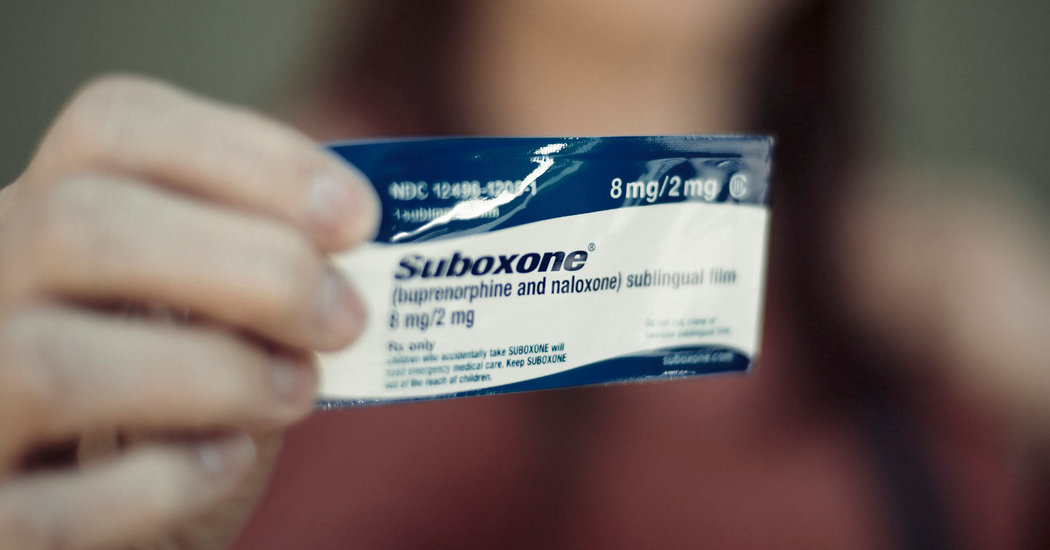
States that expanded Medicaid under the Affordable Care Act have seen a much bigger increase in prescriptions for a medication that treats opioid addiction than states that chose not to expand the program, a new study has found.
The study, by researchers at the Urban Institute, a nonprofit research group, adds to the evidence that the 2010 health care law is playing a significant role in addressing the opioid epidemic. The researchers found that the number of Medicaid-covered prescriptions for buprenorphine, which eases cravings and withdrawal symptoms, increased almost fivefold nationally — to 6.2 million from 1.3 million — between 2011 and 2018.
“Expanding Medicaid is probably the most important thing states can do to increase treatment rates,” said Lisa Clemans-Cope, the study’s lead author. “But even some states that did expand Medicaid look like they are falling short in meeting the treatment needs.”
Over the period the researchers studied, the opioid epidemic was worsening and many states — led mostly by Democrats, but sometimes by Republicans — chose to expand coverage under Medicaid, the joint federal and state health insurance program for poor people. The Affordable Care Act gave states the option of covering many more adults through Medicaid, which covers a disproportionate share of people with opioid addiction, starting in 2014.
The law also vastly expanded access to addiction treatment by designating it as an “essential benefit” that must be covered through the Obamacare marketplaces and expanded Medicaid. Buprenorphine is one of three medications that the Food and Drug Administration has approved to treat opioid addiction; there is substantial evidence that it sharply reduces the risk of dying from an overdose.
Hundreds of thousands of Americans have died from opioid overdoses over the past decade, including nearly 48,000 last year, and most people with opioid addiction are not getting treatment, according to government studies.
The study found that, on average, the rate of Medicaid-covered prescriptions for buprenorphine was much lower in states that did not expand the program; most of those states are in the South and Great Plains. In all, 33 states and the District of Columbia have expanded Medicaid since 2014 and 14 have not; they are largely led by Republicans who oppose it on partisan, ideological and fiscal grounds. In three other states — Idaho, Nebraska and Utah — voters approved ballot measures last fall directing their legislatures to expand Medicaid, but they have not yet done so.
All five of the states with the highest buprenorphine prescribing rates for Medicaid recipients — Vermont, West Virginia, Kentucky, Montana and Ohio — expanded Medicaid. West Virginia, Kentucky and Ohio also have among the highest overdose rates in the nation, but overdose deaths fell in all three states last year.
Only one of the five states with the lowest buprenorphine prescribing rates in Medicaid — Arkansas — expanded the program. The other four were Texas, South Dakota, Florida and Kansas. The researchers noted that there could be other reasons for the lower number of prescriptions in some states, such as lower rates of opioid addiction or more restrictions on prescribing buprenorphine, as Arkansas has. But such factors, they said, could not explain the huge difference in prescribing rates.
Between 2011 and 2018, Medicaid-covered prescriptions for buprenorphine increased from 40 to 138 per 1,000 enrollees in states that expanded the program, the study estimated using data from the federal Centers for Medicare and Medicaid Services. In comparison, such prescriptions increased from 16 to 41 per 1,000 enrollees in states that did not expand Medicaid.
States that have chosen not to expand Medicaid have depended on several billion dollars in grants that Congress has doled out since 2017 for treatment, prevention and recovery services, but the money is scheduled to run out next year. The Trump administration is also supporting a Republican-led court case seeking to overturn the Affordable Care Act, including the expansion of the Medicaid program.
Even among the states with large increases in buprenorphine prescribing, there was wide variation. Vermont had by far the highest rate: 1,210 buprenorphine prescriptions for every 1,000 Medicaid enrollees in 2018. The next highest rate, in West Virginia, was 827 prescriptions per 1,000 enrollees.
Vermont has had one of the most ambitious expansions of opioid addiction treatment in the country, including in prisons and hospital emergency rooms. The researchers said its high prescribing rate could also reflect higher dosing — patients taking two eight-milligram tablets of buprenorphine at a time, for example.
The study did not look at prescribing data for naltrexone, another medication approved to treat opioid addiction. A third medication, methadone, is dispensed at highly regulated clinics rather than prescribed. It is possible that in some regions with low buprenorphine prescribing rates, naltrexone or methadone are more commonly used.
Dr. G. Caleb Alexander, co-director of the Johns Hopkins Center for Drug Safety and Effectiveness, said that the findings were useful but that researchers should also study the quality of care that people on buprenorphine are getting from state to state.
“Expanding the use of these evidence based, F.D.A.-approved treatments is an important first step in improving care for opioid-use disorder,” he said. “But all too often, treatment courses are short, and care for opioid addiction is fragmented from all of the other health care needs that people have.”
[Like the Science Times page on Facebook. | Sign up for the Science Times newsletter.]

